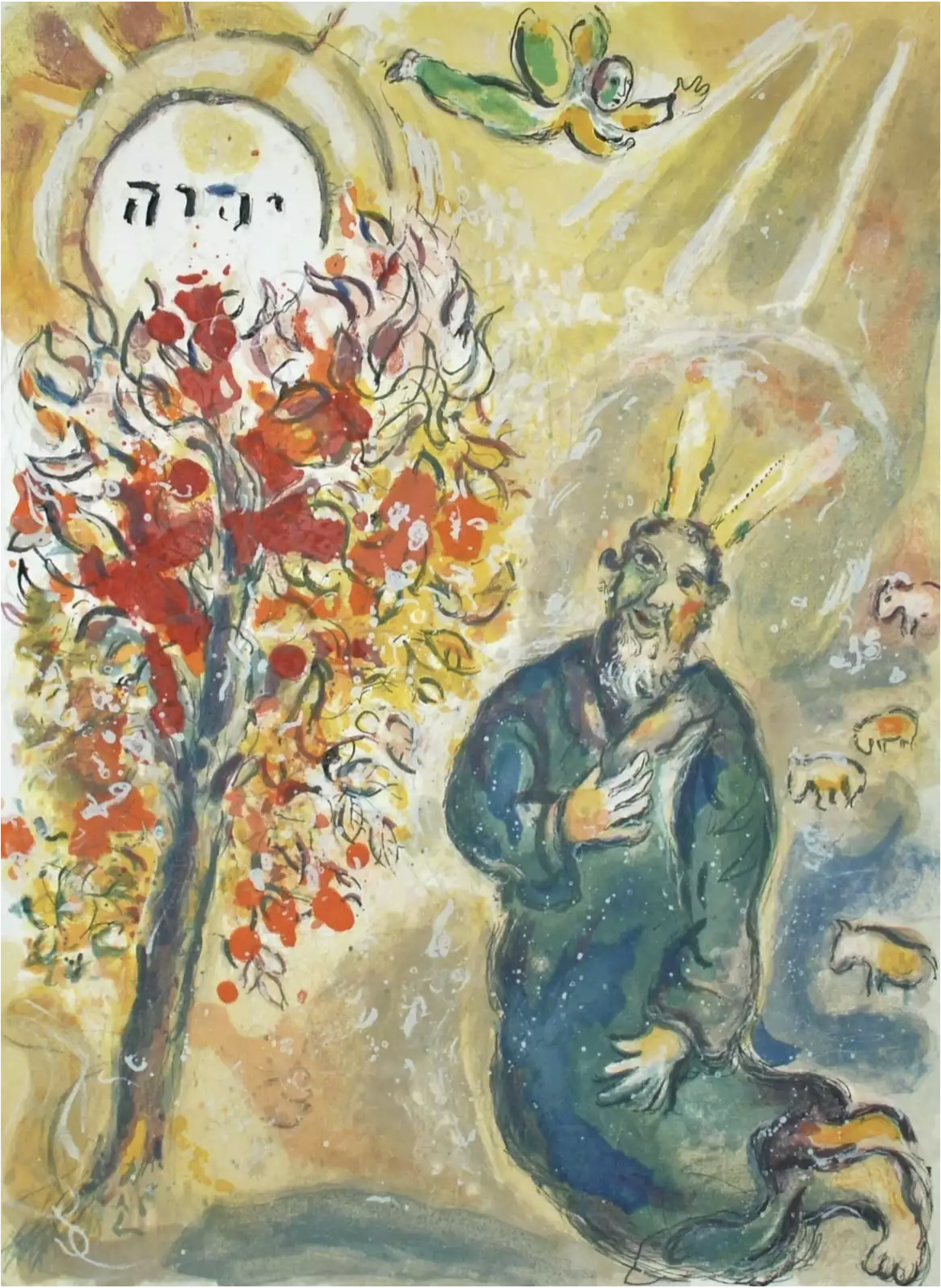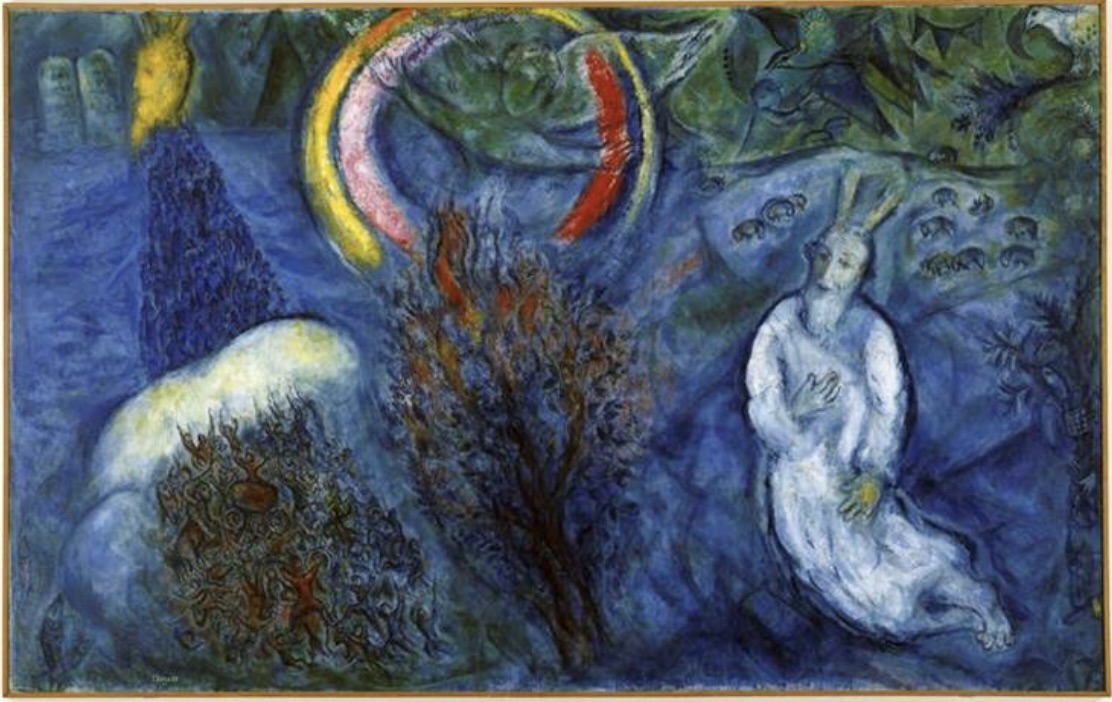Torah Study Date
Saturday, February 25, 2023
Verses Covered
Exodus (Sh’mot) 3:7-3:15
Next Session
Saturday, March 4, 2023
Starting at Exodus 3:16
Last week we discussed YHVH telling Moses to go to Pharaoh and bring the children of Israel out of Egypt. We noted that first YHVH says he has indeed seen their degradation, has heard their wail, and knows their pains (using three strong action verbs). We noted YHVH saying next that he is there to rescue them from Egypt’s hand and take them up to a good and widespread land, a land flowing with milk and honey, the place of the Canaanite, Hittite, Amorite, Perizzite, Hivite, and Jebusite. We discussed “milk and honey” as a synecdoche for animal culture and agriculture (synecdoche is part standing for whole), the honey being nectar of fruits (including dates, figs, and grapes), we thought about what type of land would be needed to produce milk and nectar of fruit (good pasture land, fruit trees, and vines, rain, sun, etc.), we noted that one tribe, the Girgashite, is not mentioned.
After saying all of that—and after repeating that the Israelites’ cry has come to him and that he’s seen the Egyptian oppression—only then, we noted, does he tell Moses to go to Pharaoh and bring the Israelites out. Not surprisingly, we thought, Moses then asks God, who am I that (1) I should go to Pharaoh and (2) I should bring the children of Israel out. After all, Moses had killed a man and become a Midianite and previously had lived as an Egyptian. We thought about the question. Does Moses have a special set of qualities that makes him the one to do these two tasks? We noted before that he might be construed to be humble because he did not look at God—and now thinks he is not worthy. We noted that midrash makes up a story that Moses was standing there with a sheep in his arms, showing that he was the sort to organize and take care of a flock and therefore a people (but also noted that midrash makes up this story rather than finding it in the text). We noted that he has a sense of injustice as evidenced by his anger at the Egyptian beating the Hebrew—but, we also noted, he is a hothead who cannot manage his anger. One idea we discussed is that there was no reason he was selected because Torah does not look for heroes but for ordinary people. God’s answer is: “Because I will be with you.” Could that mean Moses doesn’t need special qualities because he will only act together with God? God continues: “And this is the sign for you that I have sent you.” We wondered what the sign is: the burning bush? God being with Moses? something else? We also speculated on whether Moses might have a somewhat passive nature and, as a result, not want to lead. We noted God telling Moses that, after bringing the people out of Egypt, he will serve God on this mountain (Mt. Horeb/Sinai). We were sympathetic to Moses still wanting help in his assigned task and saying, the people will ask me for your name; what shall I say to them?
We discussed God’s answer at length: Ehyeh Asher Ahyeh. We noted that ehyeh is not a future tense but is an imperfect where imperfects indicate continuing or incomplete rather than completed or finished action. We noted that the name is sometimes translated as “I will be what (or who) I will be,” and sometimes as “I am what (or who) I am.” We noted that the name could imply God’s being in process (as running indicates being in the process of running) or God’s incompleteness (as an acorn growing into an oak is, while it is growing, an incomplete or undeveloped oak), or God’s completeness, perfection or perdurance (although we did not really talk about how that idea is seen to come out of the text).
We noted that God then says that Moses should tell them that Ehyeh (“I am,” “I will be,” or “I am being”) sent you to them and that YHVH, your fathers’ God sent you to them (adding two more names of God? or are they all somehow the same?). God tells Moses that this shall be his name forever and how he is to be remembered from generation to generation.
Our artwork this week is two portrayals, by Marc Chagall (1903-1985), of Moses at the burning bush, Moses and the Burning Bush, a lithograph (above), and Moses before the Burning Bush, an oil painting (below). The oil painting shows Moses, on his knees before the burning bush, with his flock of sheep in the background and a winged angel coming out of divine bright circles that emanate from the bush. She is telling him his future (which is portrayed going from right to left as Hebrew does). It shows the Israelites being chased by the Egyptians at the Red Sea, a cloud that will envelop the Egyptians, Moses protecting the Israelites in his cloak, and the tablets of the Ten Commandments which Moses received after the crossing of the sea. The painting is on display in the Chagall Museum in Nice, France. The lithograph includes the name of God, “YHVH,” which we will be discussing soon.


